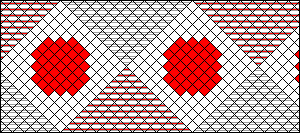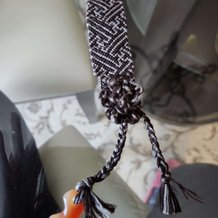Dimensions
12x20
Strings
24
Colors
2
Rate Pattern
11 Similar patterns
1 Photo
5 Comments
| You have to be Logged in to post a comment. |
| smiley00 |
3 months, 3 weeks ago by smiley00
What a gorgeous pattern! It's sad that it has to be specified that it has nothing to do with that symbol's misuse in modern history, but still, you did the right thing by specifying it. By the way, thanks for the mini lesson on traditional Japanese designs, it's pretty interesting ^^ |
| ar1shab |
1 year, 2 months ago by ar1shab
@piixvy Do I need to use the traditional colors in order to manifest that luck and prosperity?
|
| piixvy |
1 year, 6 months ago by piixvy
@averym8 Thank you! The colors used here are part of the traditional colors of Japan. Sappanwood, or "su'ō" (#7E2639) and pale crimson, or "usubeni" (#F2666C), are the ones used here, which is part of a spring color combination called "kōbai", along with pure crimson ("akabeni", #C3272B).
|
| averym8 |
1 year, 6 months ago by averym8
very cool pattern and pretty colors😁
|
| piixvy |
1 year, 7 months ago by piixvy
This traditional Japanese pattern, or wagara, is called "sayagata". It is the most basic of patterns made from interlocking manji, a Buddhist symbol of luck and propsperity. This pattern was submitted in respect to that history, and not for the symbol's recent appropriation in modern history.
|













